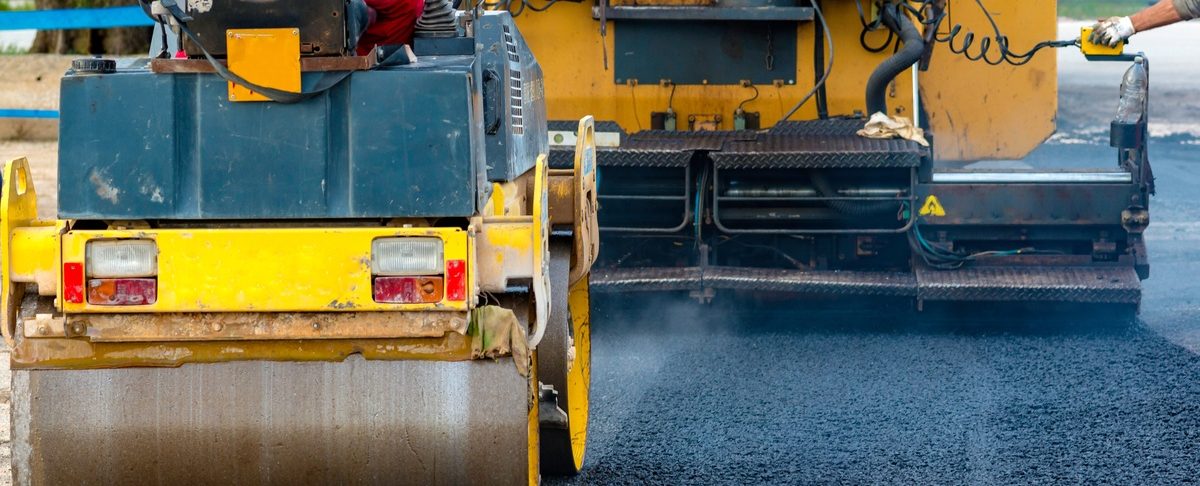A newly installed asphalt driveway is one of the best improvements you can make to your home’s exterior. However, when the crew is done, many homeowners are still unsure of what it should look like. Does it need to be this soft? What are those marks on the surface?
We’re here to guide you through what a new asphalt driveway should look like after installation, how to maintain it, and when to contact your contractor if you notice any issues. You can keep your investment safe from the start if you know what’s normal and what’s not.
Four Signs of a Properly Installed New Asphalt Driveway
A successful asphalt installation follows several key steps, grading, compaction, and finishing, and when done correctly, the results are easy to spot.
What to Look For Immediately After Installation
A well-installed new asphalt driveway should have:
- Uniform black color: A deep, matte black surface is typical of freshly laid asphalt.
- Smooth, compacted surface: The finish should be even with minimal ridges or loose gravel.
- Defined edges and clean lines: Your contractor should create neat transitions to sidewalks, garages, or curbs.
- Proper slope for drainage: The driveway should slope slightly away from your home to avoid water pooling.
Initially, you may notice some faint roller traces or streaks. These are typical and will subside over time as the surface settles and oxidizes. A clean finish, tight compaction, and proper grading are all signs that your asphalt driveway was installed correctly.
How Long Should a New Asphalt Surface Take to Cure?
Curing is one of the most critical but least understood steps in asphalt driveway installation. Although it may appear finished, your new surface requires time to strengthen.
The Asphalt Drying vs. Curing Timeline
During the curing period, the surface is still soft and can be easily marked or dented by parked vehicles, sharp objects, or even bicycle kickstands.
- Initial set time: You can typically walk on the driveway after 24–48 hours.
- Drive-on window: We recommend waiting at least 5–7 days before driving on new asphalt.
- Full cure: It takes 6-12 months for the asphalt to fully cure, depending on weather and thickness.
Important Reminder: Avoid driving, parking, or placing heavy items on the surface until it has fully cured. Taking the time to allow for proper curing guarantees lasting strength and resilience.
What Surface Texture or Finish Should Homeowners Expect?
New asphalt driveways have a slightly different appearance than older ones. The texture, color, and shine may change over the first few months.
Normal Characteristics of New Asphalt
Expect some cosmetic irregularities. Surface evolution is normal during curing.
- Dark, slightly oily surface: This is due to fresh asphalt oils and will fade to a charcoal gray.
- Minor surface imperfections: Small variations in texture or roller lines are expected and are cosmetic.
- Slightly soft feel in warm weather: Heat can temporarily soften uncured asphalt.
If you notice larger dips, crumbling edges, or standing water that doesn’t drain off, those may be signs of poor installation and should be addressed.
What Problems Might Show Up in the First Few Weeks?
While most new asphalt driveways settle without issue, there are a few early warning signs to watch for.
Watch Out for These Common Issues
Light surface marks are common. Serious problems early on may point to installation flaws.
- Indentations from tires or parked vehicles: Avoid parking for the first 7–10 days.
- Scuffs from turning wheels: Try to limit tight turns until the surface hardens.
- Stains from oil or fuel: Clean spills immediately to avoid weakening the asphalt.
If you notice deep cracks, loose aggregate, or surface separation, reach out to your asphalt contractor right away.
Early Care Tips to Maintain a New Asphalt Driveway
Your new driveway can last 20 years or more, but only with proper early care. The first few months are critical to long-term performance.
How to Keep Your New Asphalt Driveway in Top Shape
Careful handling and straightforward upkeep during the initial year significantly contribute to avoiding early deterioration.
- Don’t drive or park on it for a week (or longer during hot weather).
- Keep sharp or heavy objects off the surface.
- Don’t sealcoat for at least 90 days or until the asphalt is fully dry. Let the driveway cure naturally.
- Promptly rinse away any oil or chemical spills.
- Keep it clear of leaves, debris, and snow piles.
Enhance the durability of high-traffic zones by incorporating a concrete apron adjacent to the garage.
Why Homeowners Choose Richfield Blacktop for New Asphalt Driveways
At Richfield Blacktop, we know how to install driveways that look great on day one and last for decades to come. Our experience across Minnesota’s unique freeze-thaw climate means we build asphalt driveways with performance in mind, not just appearance.
What Makes Richfield Blacktop Different
- Local knowledge of Minnesota soil and weather patterns.
- Use of durable asphalt mixes tailored to your needs.
- Our skilled installation crews ensure proper grading, compaction, and drainage.
- We keep you informed before, during, and after installation.
- We stand behind our work with strong warranties and local support.
From the initial quote to the final walkthrough, we help you feel confident every step of the way.
Ready to Install Your New Asphalt Driveway?

A smooth, long-lasting asphalt driveway begins with expert installation and proactive homeowner maintenance. Now that you know what to expect, from curing to surface texture to warning signs, you’re ready to protect your investment for the long haul.
Whether you’re building a new home or replacing an aging driveway, contact Richfield Blacktop today. Our decades of experience and tailored paving solutions have made us the preferred choice for asphalt driveway installations across Richfield and the Twin Cities suburbs.




